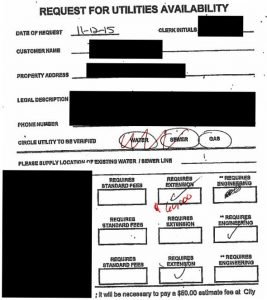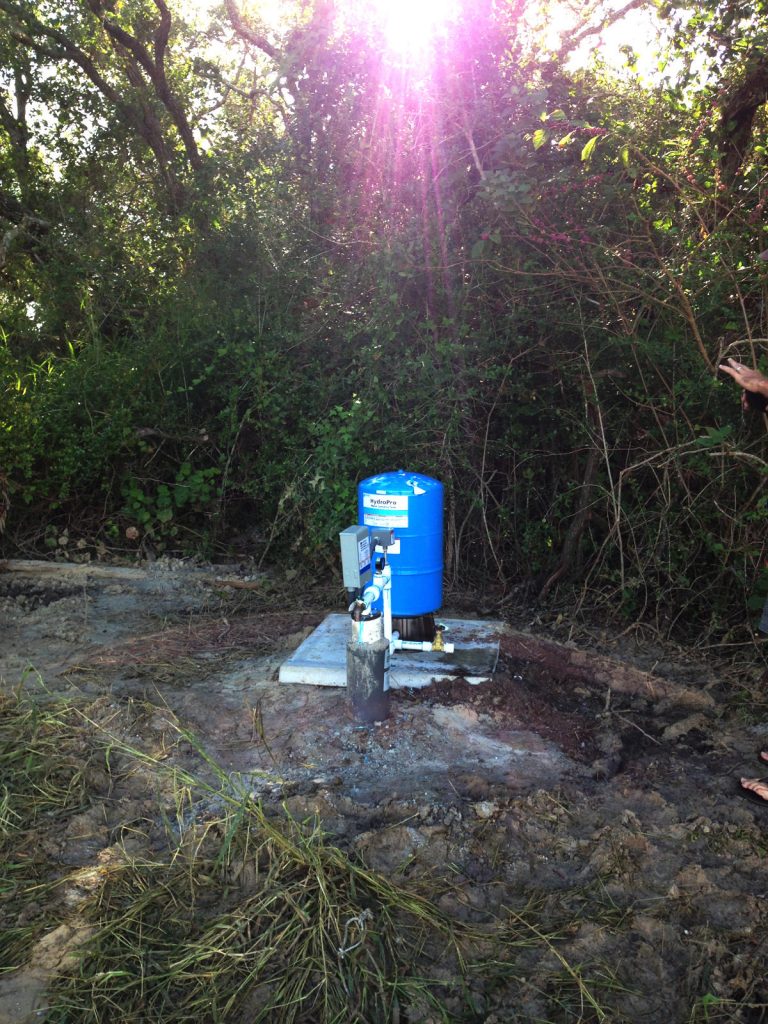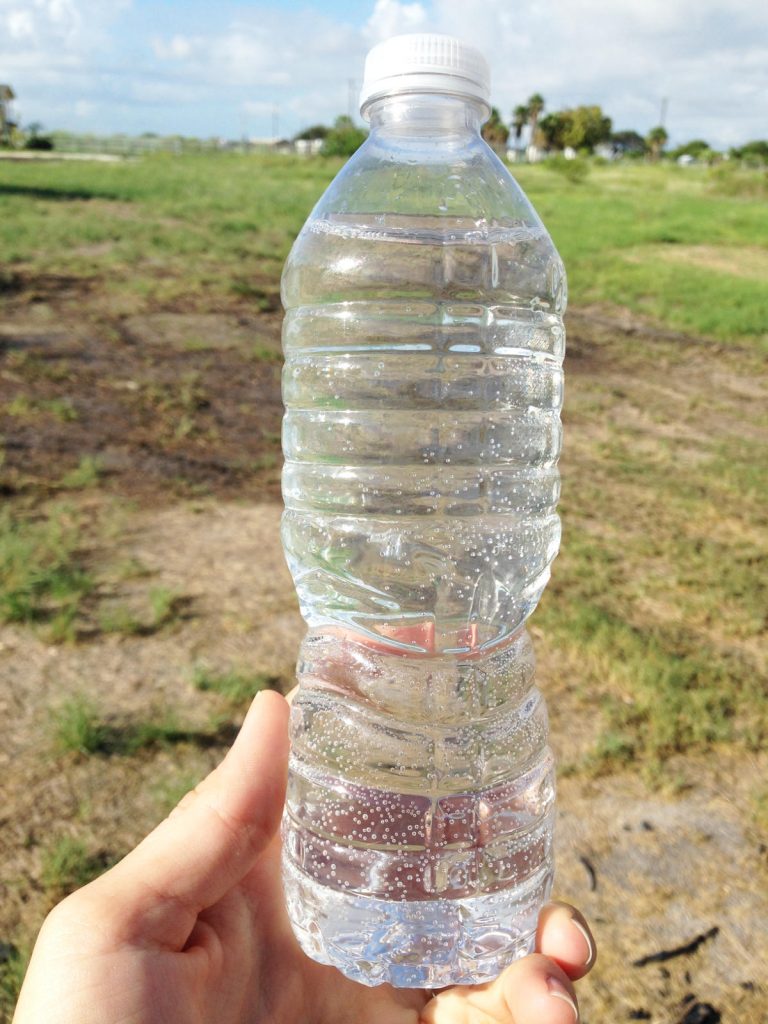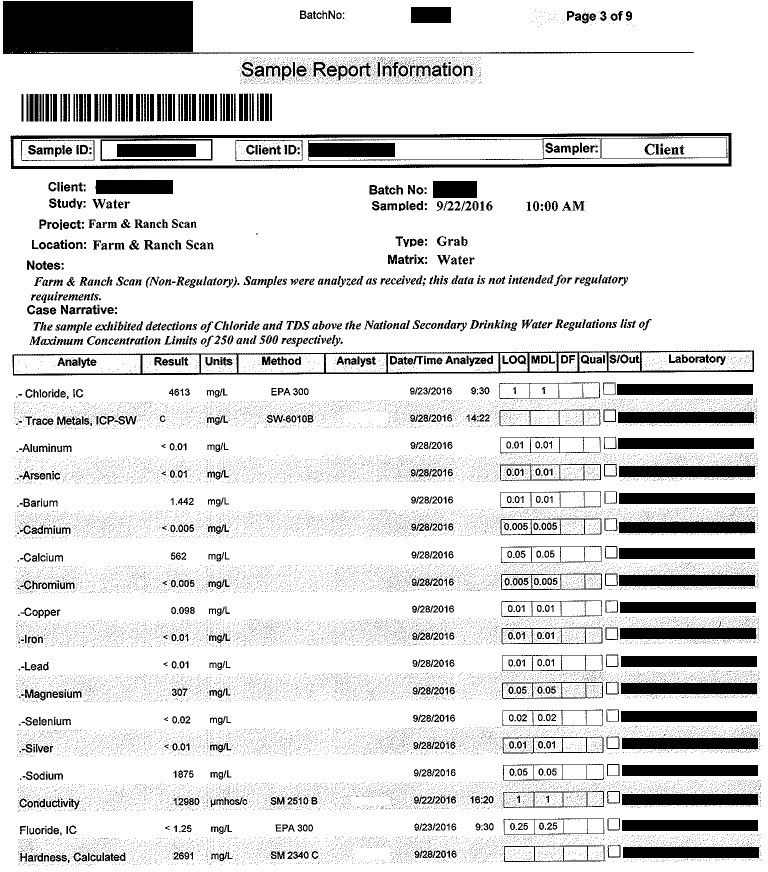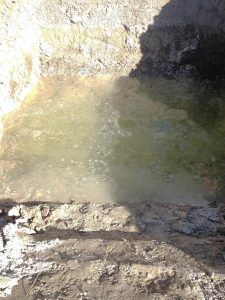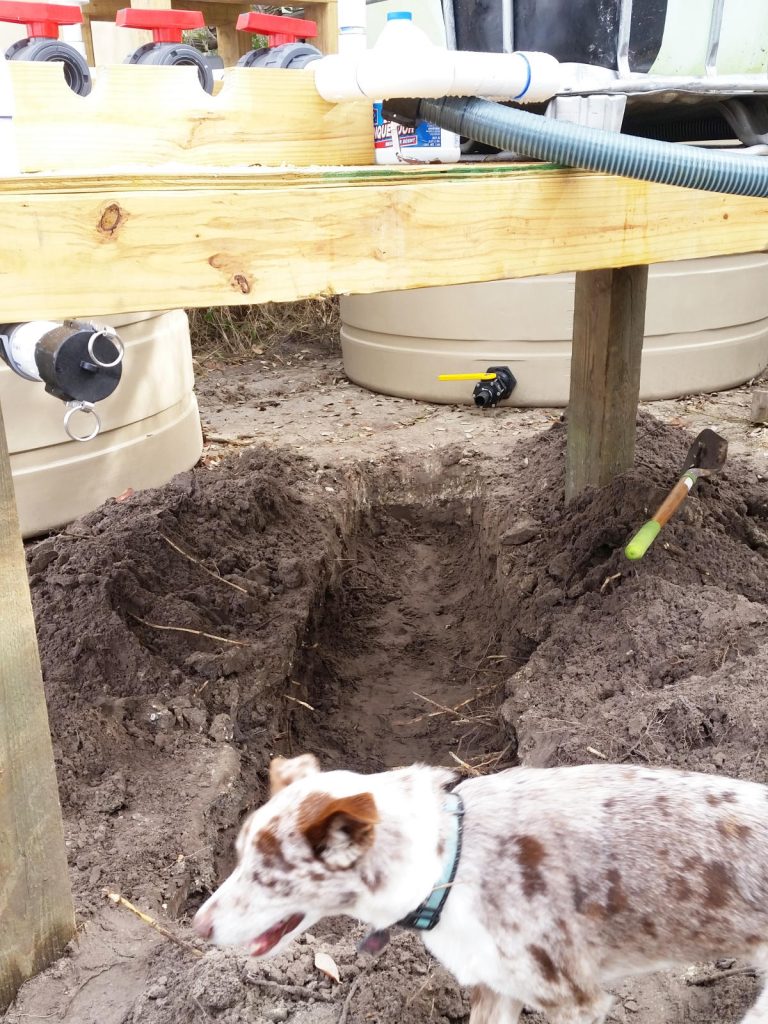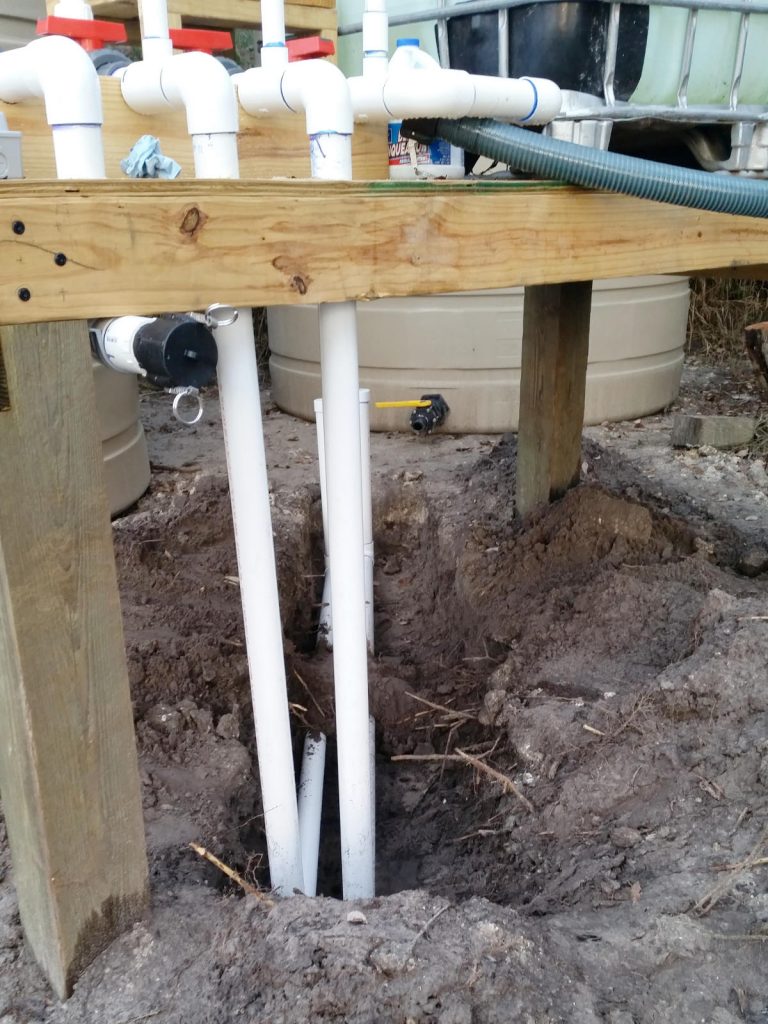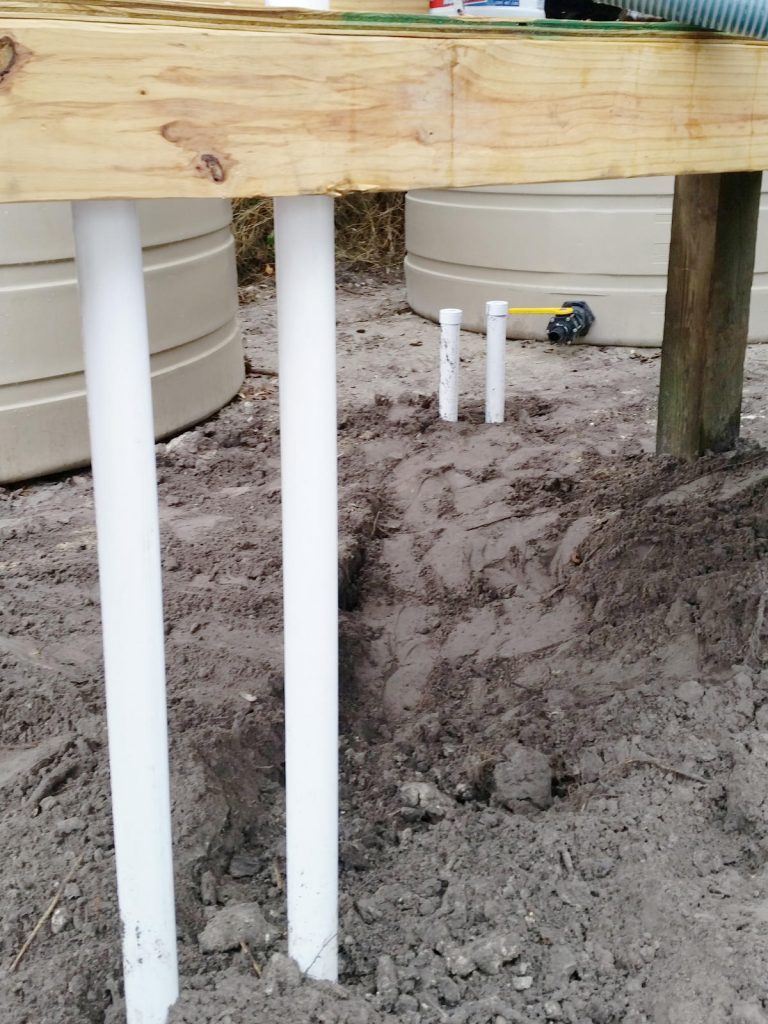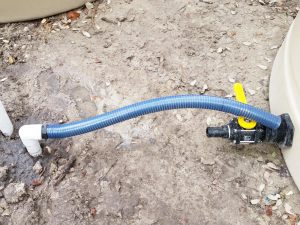
Water Management System Update
It has been a while since I’ve posted about the Water Management System. Went on and on about not having any water and now that I do, not a drop. Figures, really. It is easy to rant and rave. It takes time and effort to report.
Let us recap the great water debacle. I guess one could say it all started when the land was still under the 30 day option period way back in Nov 2015. The Request for Utilities came back stating not only was water not available, it would cost over $60K to have it brought to the house. That is almost what the land was purchased for and the land does not come with a monthly maintenance and usage fee like water does. Ok, well, that is not true either. It comes with yearly taxes. Anyhoo, I digress. Being there was no way $60K was being paid, several well drillers were called with the same result. Yes, a well could be dug and produce drinkable water at our location because there are live oak trees available. Apparently, the local farmer’s lore states: “live oak trees don’t like to get their feet wet”. Meaning, there should not be salt water, just fresh water. With that settled, a well was dug at an approximate cost of $6K.
Knowing ahead of time city water was not available, a well was installed by a local company in September 2016. These people were and are the nicest folks around. They were prompt, courteous, and friendly. From start to finish, the well was installed in less than a week. What came out of the ground was just beautiful, crystal clear, non-smelling saltwater. Yup, paid good hard earned money for saltwater.
Undeterred, the water was sent to an unbiased, third party lab several cities away at the end of September. The results that came back three weeks later were staggering and proved the saying “more than meets the eye”. This water had everything in it, including all three minerals for salt. Ugh.
While waiting for the results of the lab we were still optimistic. A quote on an RO system was obtained and prices came back anywhere between $15K – $25K. Of course, this is just the cost of the filtration system and pumps, not the yearly maintenance or filters. By the end of the first week in October 2016 and after many phone calls to various water witchers, drillers, and local authorities it was decided to let the well runs for several days to see if the water would clear out. A hole was dug to contain the water so it did not make such a mess. And guess what? Remember the farmer’s saying about wet feet? Ha! Little do they know. Geneticists should come study these trees because salt water is found just three feet below ground surface. I could become a tree-billionaire. Hmmm, need to give that some thought. Three feet. The hole was collecting water faster than the dirt could be removed safely. This picture above shows the amount of saltwater collected after one night, less than 12 hours.
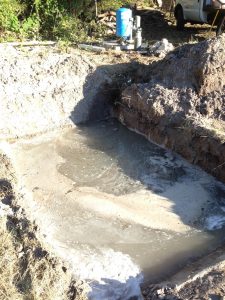
But the hole was already dug, so the water was pumped out. Gallons and gallons at a time for hours on end. Gallons and gallons of saltwater. After the saltwater seeped back into the ground, the hole was filled in while a new plan was in the works.
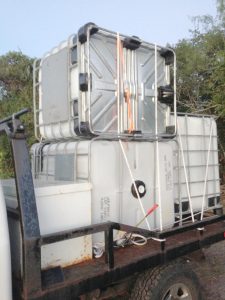
IBC totes. Until a better, more reliable, and completely independent solution could be worked out our water was going to be begged, borrowed, and pleaded from various friends. And that is what we did. Three IBC totes to be exact. Less than 1000 gallons.
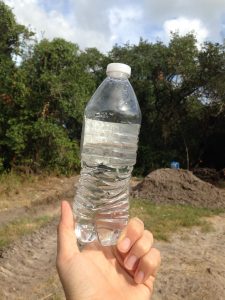
Did I mention how great the well company was? Feeling bad about our water issue, a compromise was worked out to drill a second well. Thinking he drilled past the fresh water level into the salt water table he wanted to check. Couldn’t live with himself otherwise, he said. During the middle of November, he did just that. The well was dug at a much shallower level of 55′ deep and then pulled up the pump until it started to sputter at 32′. All with the same results: saltwater. Oh well, had to try, right? It was at this point when all positive notions were lost. One can only be kicked so many times before they stay down.
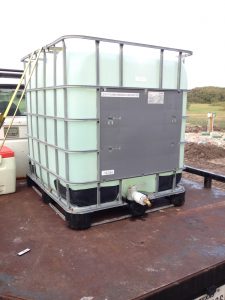
At least there were still friends in fresh water places allowing us to obtain drinkable water. By the end of November, Boxes in Fields had become our permanent home making it easier to monitor water consumption. Using less than 30g/day, a 330g tote should last about ten days. This is great news. It means obtaining water from these sources will be even farther apart. Then come the first of December 2016 and a better resource had become available. While not independent, it allows us free access to more water than we could ever use.
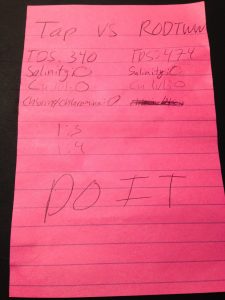
An unnamed source in town has an RO water system. For every gallon of city water filtered, one to three gallons of “waste” water is expelled. The water concentrated with minerals after being filtered through the RO system read at 340mg/l of TDS (total dissolved solids). This “waste” water was still less than EPA regulation of 500mg/l of TDS. The well water at Boxes in Fields read at 6359mg/l TDS.
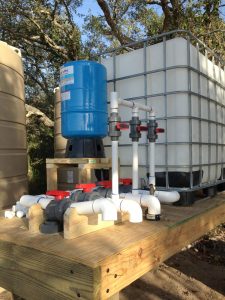
First, there was no water and then there was free water being “wasted” while a water management system was created for collecting and storing water. A platform of strength was built, tanks were purchased, and water was collected.
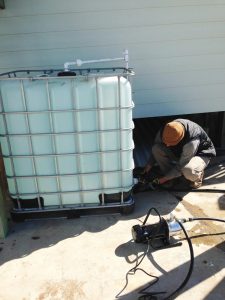
Water collects all day, every day in an unobtrusive manner behind the building of its source.
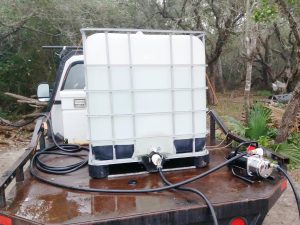
When filled, an external pump is used to drain from the tote behind the building into another tote on the back of the truck.
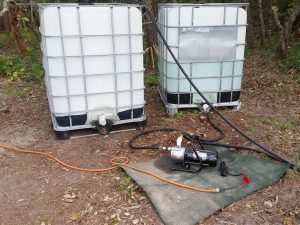
That tote is then emptied into another tote at home and then into the water management system once the platform was built.
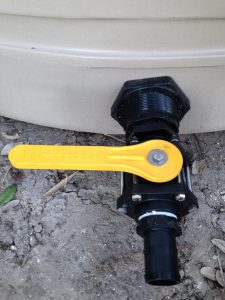
Even though the water was collected and used at various locations around the property, the system was still not complete. A ball valve needed at the bottom of the tank was on backorder for weeks and weeks. Ordered sometime in early December, the part finally arrived smack dab during the middle of footing preparation in January.
Trenching running from the outside of the tanks to the outside of the water management system was dug, PVC piping was connected between the two, and firmly packed into place. Unlike all previous trench work, this was done completely by hand bending on knees while stooping under the platform. Again, lucky for the Planner the ground is soft sand.
After sourcing a flexible water line from a local pool company, the line was final step in connecting the water management system to the water tanks. After months of dealing with the Great Water Debacle, Boxes in Fields has an working water management system. While this system is not designed for the long term because it still relies SOLELY on the generosity of this source, it has worked very well. Using around 30 gallons of water a day (50 on days where footing clean up is required) has allowed Boxes in Fields to collect, store, and fill one 3000 gallon water storage tank and half of the another. The long-term plan is to collect water from every roof source.
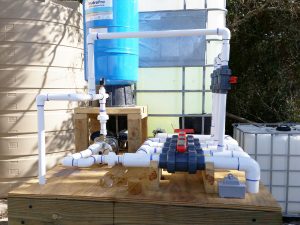
At this point, the water management system is still not completely finished. It needs to be closed in to keep the algae at bay, to help against salt corrosion, and to protect from UV breakdown. However, that step cannot be completed until the Shop Box is built. The housing will be built using remaining materials from the combination of the two conex boxes. So until then, extra bleach will be used to ward off the algae. Nothing like using chemicals to keep one health
